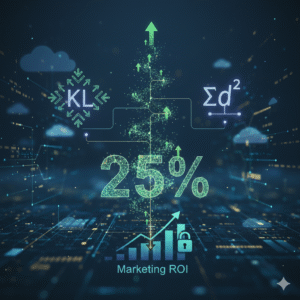Imagine sitting in a bustling office, sifting through mountains of numbers that tell stories about customer behavior, market shifts, and business opportunities. That’s the daily thrill for data analysts, turning raw information into game-changing insights. If you’ve ever wondered why companies are scrambling to hire people who can make sense of their data, you’re in the right place. In 2025, with businesses generating more data than ever, the role of a data analyst has become indispensable.
According to the U.S. Bureau of Labor Statistics, employment for data scientists and analysts is projected to grow by 34% through 2034, far outpacing most occupations. And with average salaries hovering around $111,000, it’s not just about job security; it’s about building a rewarding future.
But how do you get there? This data analyst roadmap breaks it down into 10 actionable steps, drawing from current trends like AI integration and real-time analytics. Whether you’re switching careers or just starting out, we’ll cover everything from foundational skills to landing your first role. Let’s dive in and map out your path.
Table of Contents
Why Pursue a Data Analyst roadmap in 2025?
Picture this: A startup uses data to predict customer churn and saves millions in lost revenue. Or a healthcare firm spots trends in patient data to improve treatments. These aren’t hypotheticals; they’re everyday wins in data analysis. The field is booming because every industry, from tech to finance, relies on data-driven decisions.
Current stats paint a vivid picture. The World Economic Forum ranks data analysts among the fastest-growing jobs through 2030. In some regions, projections show over 11 million openings by 2026. Yet, the market isn’t without challenges—remote roles are scarcer, with less than 8% of postings fully remote. Still, with AI tools enhancing rather than replacing analysts, the focus shifts to storytelling and insight communication.
Trends like AI-driven analysis mean analysts now blend technical prowess with business acumen. If you thrive on solving puzzles and influencing outcomes, this career path offers endless growth from entry-level roles to senior positions like data scientist or analytics manager.
How to Become a Data Analyst: 10 Key Steps
Breaking into data analysis doesn’t require a fancy degree, but it does demand a structured approach. Here are your step-by-step data analyst learning steps to get started in 2025.
- Build a Strong Foundation in Math and Statistics Start with basics like probability, linear algebra, and hypothesis testing. These underpin everything from trend spotting to predictive modeling. Online resources like Khan Academy can help you brush up quickly.
- Learn Programming Basics Focus on Python or R for data manipulation. Python’s libraries make it a favorite—think Pandas for data frames and NumPy for numerical operations.
- Master SQL for Data Analysis SQL is your gateway to querying databases. Practice joins, aggregations, and subqueries on platforms like LeetCode. It’s crucial because most data lives in relational databases, and efficient queries can uncover hidden patterns.
- Dive into Data Visualization Tools Tools like Tableau and Power BI turn numbers into visuals. Create dashboards that highlight key metrics—employers love seeing how you communicate insights.
- Gain Hands-On Experience with Projects Tackle real datasets from Kaggle. Build a portfolio showcasing analysis on sales trends or customer segments.
- Earn Relevant Certifications Boost your resume with credentials like the Google Data Analytics Certificate or Microsoft Power BI Data Analyst Associate.
- Understand Business Contexts Learn domain knowledge in areas like finance or marketing to apply data meaningfully.
- Develop Soft Skills Communication and problem-solving are key. Practice presenting findings as if to executives.
- Network and Apply Strategically Join LinkedIn groups and attend virtual meetups. Tailor applications to highlight your projects.
- Stay Updated with Trends Follow advancements in AI and big data. Continuous learning keeps you competitive.
This data analyst career path can take 6-12 months if you’re dedicated.
Essential Data Analyst Skills 2025
In 2025, data analyst skills 2025 blend tech with strategy. Core ones include:
- SQL and Database Management: For extracting and transforming data. Tips: Use aliases for clarity and optimize queries with indexes.
- Python for Data Analysis: Libraries like Matplotlib for plotting and Scikit-learn for basic ML. Start with tutorials on Real Python for practical scripting.
- Data Visualization: Mastery of tools for creating interactive charts. Example: Use Tableau to visualize sales data, revealing seasonal trends.
- Statistical Analysis: Hypothesis testing and regression to validate insights.
- Soft Skills: Storytelling to explain complex data simply.
Emerging trends emphasize AI integration, like using prompt engineering for faster insights. Case study: A retail analyst used Python to forecast inventory, reducing waste by 15%.
Mastering SQL for Data Analysis
SQL isn’t just a tool, it’s the backbone of data querying. Why? It handles large datasets efficiently, allowing you to filter, join, and aggregate with precision. For analysts, knowing WINDOW functions for running totals or CTEs for complex queries can save hours.
Tips: Always understand your data structure first. Practice on real scenarios, like analyzing e-commerce sales to find top performers. In a case from Instacart, SQL helped optimize delivery routes by querying user patterns.
Python for Data Analysis: Getting Started
Python shines for its versatility in data wrangling and automation. Key libraries: Pandas for manipulation, Seaborn for enhanced visuals. Example: Analyze a CSV of stock prices to predict trends using simple regression.
Begin with freeCodeCamp’s curriculum for structured learning. Real-world application: Netflix uses Python to personalize recommendations, boosting user retention.
Top Data Visualization Tools for 2025
Visuals make data digestible. Popular ones:
- Tableau: Great for interactive dashboards, praised for polish.
- Power BI: Affordable, integrates with the Microsoft ecosystem.
- Looker: For embedded analytics in apps.
Trends point to AI-enhanced tools like ThoughtSpot for natural language queries. Example: A finance team used Power BI to track KPIs, spotting fraud early.
Best Data Analysis Certifications 2025
Certifications validate your skills. Top picks:
- Google Data Analytics Professional Certificate: Covers basics to advanced.
- IBM Data Analyst Professional Certificate: Focuses on Python and SQL.
- Microsoft Certified: Power BI Data Analyst: For visualization pros.
These can lead to a 20% salary bump. Case: A learner used the Google cert to transition from marketing to analysis.
Building Data Analyst Portfolio Projects
Your portfolio is your ticket to interviews. Ideas:
- Customer Churn Analysis: Use telecom data to predict leavers.
- Sales Forecasting: Time series on retail sales.
- Sentiment Analysis: Scrape social media for brand insights.
Host on GitHub with Jupyter notebooks. Example: One analyst’s churn project landed them a role at a fintech firm.
Real-World Data Analyst Projects and Case Studies
Learn from successes. Uber uses data to optimize rides, reducing wait times. In manufacturing, predictive maintenance cut downtime by 30%. Lemonade insurance leveraged analytics for customer-centric growth.
Try replicating: Analyze public COVID data for trend insights.
FAQs
How to become a data analyst?
Start with education, skills, projects, and networking.
Data analyst career path?
From junior analyst to head of analytics.
Data analyst skills 2025?
SQL, Python, visualization, AI basics.
Real-world data analyst projects?
Uber optimization, retail forecasting.
Python for data analysis?
Libraries like Pandas and NumPy.
Wrapping Up Your Data Analyst Journey
You’ve got the data analyst roadmap, now it’s time to act. Start small, build projects, and network. With persistence, you’ll turn data into your superpower. What’s your first step? Share in the comments, and let’s keep the conversation going.


















